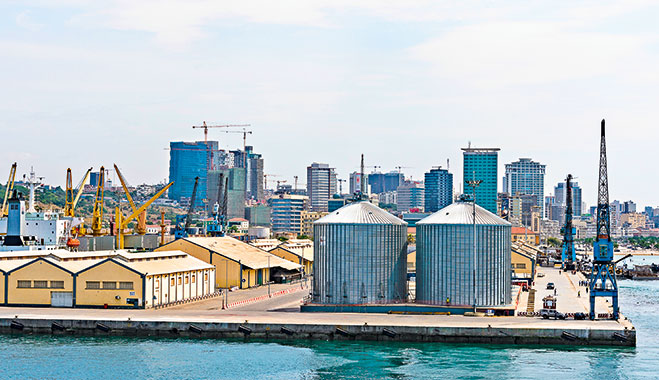
Widespread access to energy – in quantity, with quality and in a sustainable manner – is a sine qua non condition for the economic and social development of any country. And by the same token, shortfalls and deficiencies in energy production and distribution are one of the main factors that stifle and sharply restrict the growth of developing economies.
This is true for Angola, a country which, on account of its recent history (the armed conflict severely harmed its infrastructure, including countrywide energy grids), as well as the needs arising from its fast-growing economy, now faces a huge challenge to ensure the sustainability of energy supply and of the whole energy system.
According to a World Bank survey (2011), Angola’s national electrification rate (30 percent) stands significantly below the African and world averages (41 percent and 74 percent, respectively) and its consumption of energy (250 KWH per capita) is lower than the average in Africa (500 KWH) and much lower than the average for the Middle Eastern and North African countries (2,500 KWH), which are the country’s benchmark in terms of GDP.
However, Angola aims to reverse this situation and become a reference for other emerging economies. To achieve this goal, it has launched an ambitious programme with the following main objectives: i) double the electrification rate (to 60 percent) through a national plan for urban and rural electrification; ii) achieve a four-fold increase in installed capacity (from 1.9 GW to 7.9 GW) and annual production (from 7,700 GW to 34,300 GW) by expanding the share of hydro and thermal power in the energy mix (Angola has the third-largest water reserves in Africa and an abundance of oil and gas); and iii) rehabilitate and expand the national electrical energy transmission and distribution grid – to connect the north, central and south grids, creating an eastern one and making an international connection to Namibia and the Popular Republic of the Congo.
Growth surge
To reach these objectives, Angola’s National Development Plan (NDP) for 2013-17 gives a clear priority to the energy sector due to its role as a catalyst for growth and its potential for solving the bottlenecks that currently hinder the execution of projects by the private sector.
Angola has the third-largest water reserves in Africa and an abundance of oil and gas
The NDP foresees a total public investment in the private sector of $50.7bn, roughly two thirds of which ($37bn) will be in energy. In addition to this, private investment projects could reach in excess of $10bn. All in all, 390 structuring projects (public, private or in partnership) have been identified within the scope of the Public Investment Programme (PIP).
The private sector’s participation in Angola’s energy production, transmission and distribution is still negligible (roughly five percent of total capacity). The government intends to change this scenario through the Power Sector Transformation Programme (PSTP), established in 2012, which has identified the absence of incentive policies or attractive tariffs allowing for a return on investment and the lack of a clear and independent institutional and regulatory framework as the main inhibitors of private investment in the sector.
Investment incentives
The aim is to convey an incentive to investors through: the implementation of a new organisation model for the sector, with the unbundling of production, transmission and distribution (market-oriented model); a corporate restructuring involving the creation of new companies (through the split and incorporation of the present ENE, EDEL and GAMEK) with new competencies and increased efficiency; the creation of an independent transmission company with the role of unique buyer; the reinforcement of the role of the regulator (IRSE) to ensure equal competition terms to public and private production; and the revision of the tariff system, including the reduction of the currently very high level of subsidisation (about 80 percent with an annual cost of $800m) to a sustainable level.
Bottom line: the aim is to promote the entry of private capital and private know-how into the engineering, construction, operation and maintenance of the energy infrastructure through the launch of public-private partnerships, and to establish attractive remuneration schemes under long-term power acquisition agreements with differentiated tariffs. The participation of private investors could thus provide a solution to currently indebted and under-capitalised public-owned energy companies, as well as to the need to raise extensive funds in order to finance the major investments that the country requires.


